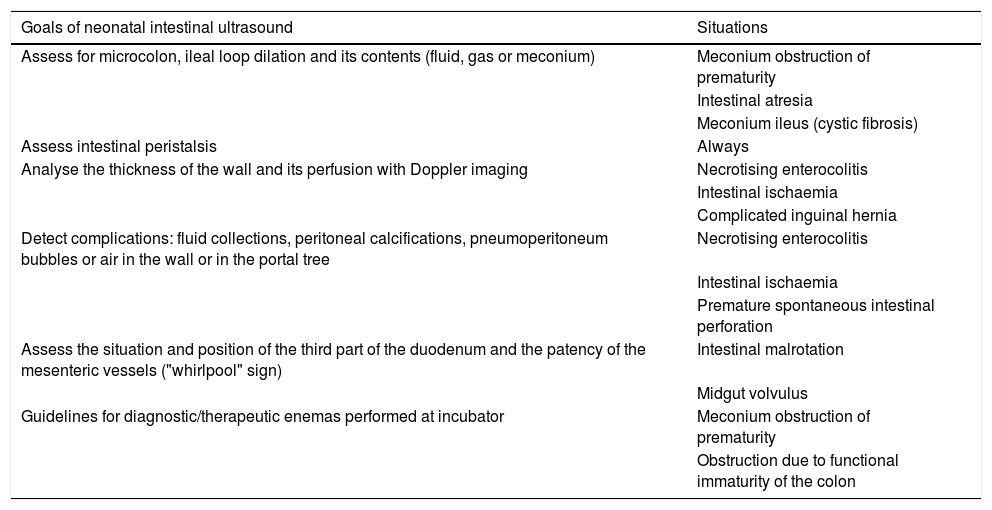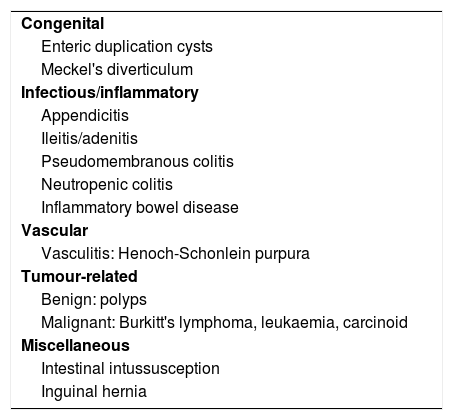
Edited by: Dr. Tomás Ripollés González - Servicio de Radiodiagnóstico, Hospital Universitari Doctor Peset, València, España
More infoUltrasonography is the imaging technique of choice for studying the digestive tract in paediatric patients from the neonatal period to adolescence. Its dynamic character, absence of radiation, and scant preparation required make ultrasonography preferable to contrast-enhanced fluoroscopy, computed tomography, or magnetic resonance imaging. Technical advances in ultrasound, including high-resolution multifrequency probes, panoramic studies, colour Doppler, Doppler with microvascularization, elastography, and contrast agents for use in children, have increased the sensitivity and specificity of this technique.
Intestinal ultrasound is indicated for conditions with diverse etiologies and pathogenesis: congenital, infectious, inflammatory, tumor-related, and vascular. Knowledge of embryological development and the normal characteristics of the digestive tract help in identifying, recognizing, and interpreting the ultrasound findings of the different conditions in paediatric patients.
This paper aims to show the indications for ultrasound studies of the digestive tract in children, the findings on these studies, and the management of the most common gastrointestinal conditions in paediatric patients.
La ecografía es la técnica de imagen de elección en el estudio del tubo digestivo en pediatría, desde la época neonatal hasta la adolescencia. Su carácter dinámico, ausencia de radiación y escasa preparación requerida la sitúan por delante de los estudios fluoroscópicos contrastados, la tomografía computarizada o la resonancia magnética. Los avances técnicos en ecografía, con el desarrollo de sondas multifrecuencia de alta resolución, estudio panorámico, dóppler colour, dóppler con microvascularización, elastografía y la introducción en edad pediátrica del contraste ecográfico, han aumentado su sensibilidad y especificidad diagnóstica.
Está indicada en patología de etiopatogenia diversa: congénita, infecciosa, inflamatoria, tumoral y vascular. Conocer el desarrollo embriológico y las características normales del tubo digestivo ayuda a identificar, reconocer e interpretar los hallazgos ecográficos de la diferente patología pediátrica.
Nuestro objetivo es mostrar las indicaciones de imagen, los hallazgos ecográficos y el manejo de la patología gastrointestinal más frecuente en edad pediátrica.


















